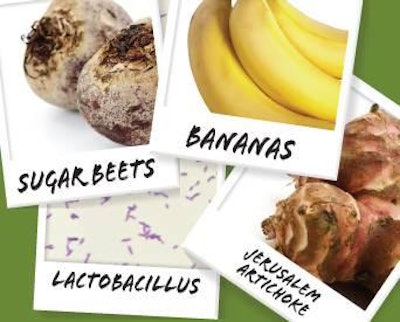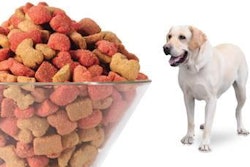
Since the term “functional food” was first used in Japan in the 1980s, food science and nutrition knowledge have progressed from identifying and correcting nutritional deficiencies—improving life expectancy—to designing foods that promote optimal health and reduce risk of disease—improving wellness and the quality of life, said K.B. Kore, PhD, assistant professor with the College of Veterinary Science and Animal Husbandry at Navsari Agricultural University in India.
This progression began in human food, but as with many concepts, it soon made its way into petfood, prodded by consumers’ demands for products for their furry family members with the same types of ingredients that foods for humans have. In many cases, this means prebiotics and probiotics.
In a Petfood Forum Asia 2012 presentation, “Prebiotics, Probiotics and Synbiotics as Functional Foods for Dogs,” Dr. Kore shared the potential health benefits of these functional ingredients:
- Modulation of hindgut health (mainly colon), including maintaining intestinal microbial balance and lowering pH, production of organic acids and ammonia;
- Resistance to intestinal infection;
- Improvement in bioavailability and absorption of minerals;
- Hypoglycemic and hypolipidemic actions;
- Management of infectious diarrhea;
- Reduction of risk of obesity; and
- Reduction of risk and severity of osteoporosis, colon cancer and inflammatory bowel disease.
Dr. Kore offered an evolving concept of a prebiotic: a selectively fermented ingredient that allows specific changes, in both the composition and the activity of gastrointestinal (GI) microflora, that confers benefits on host health and well-being (Gibson et al., 2004). This builds on a previously accepted definition of prebiotics as non-digestible ingredients that benefit the host by selectively stimulating the growth or activity of one or a limited number of bacteria (commonly considered probiotics) in the colon.
Dr. Kore added that an ideal prebiotic beneficially alters luminal or systemic aspects of the host’s defense system. Prebiotics that have been researched and used in both human foods and petfoods include inulin, fructo-oligosaccharide (FOS), oligofructose (short chain, or scFOS), galacto-oligosaccharide (GOS) and lactulose from sources such as garlic, onions, Jerusalem artichokes, chicory roots, sugar beets, milk (lactose) and bananas. Dr. Kore also shared potential new prebiotics available on the horizon for petfoods:
- Xylo-oligosachharide, an oligosaccharide made of xylan through enzymatic hydrolysis (commercially produced with corn cobs);
- Isomalto-oligosaccharide, a mixture of short-chain carbohydrates with digestion-resistant properties found naturally in some foods and also manufactured from starch; and
- Soybean oligosaccharide, a type of GOS.
A study conducted in the Department of Animal Science at the University of Illinois showed that low-level supplementation of scFOS, GOS and their combination have positive effects on select indices of gut health in cats (K. Kanakupt et al., 2011). Until this study, not much research was available on the prebiotic effects of non-digestible oligosaccharides in cats, the authors said.
In his presentation, Dr. Kore described a probiotic as a “preparation or product containing viable, defined microorganisms in sufficient numbers that alter the microflora of the intestine and by that exert beneficial health effects on the host.” Examples of probiotics commonly used in both human foods and petfoods include Lactobacilli, Bifidobacteria, gram-positive cocci, yeast and fungi.
While many treats on the market today use probiotics, the Probiotic Live dog food line, as its name implies, includes actual live probiotics in an extruded dry petfood, a first according to the manufacturer, Bacterfield Corp. Though the company (based in Luxembourg) doesn’t reveal its exact manufacturing technology, it says the formula infuses the bacteria inside the kibble, helping it remain stable for at least 15 months and allowing for a dosage of 1 billion live Enterococcus faecium. The formulation also includes prebiotics such as FOS.
Because it’s often difficult to get probiotics to colonize and remain that way in the intestine, using them with prebiotics increases persistence in the GI tract by providing a preferred food for the probiotics, thus promoting their growth, according to Trevor Faber of the University of Illinois.
Recent research into these combinations is producing ingredients called synbiotics, Dr. Kore said. He defined a synbiotic as a mixture of prebiotics and probiotics that helps improve survival and implantation of live microbes in the GI tract by selectively stimulating the growth and/or activating the metabolism of one or a limited number of health-promoting bacteria. Examples of synbiotics include:
- Bifidobacteria + FOS;
- Lactobacillus + FOS;
- Lactobacillus + inulins; and
- Bifidobacteria + inulins.
Dr. Kore shared results of a study he conducted with A.K. Pattanaik and K. Sharma of the Centre of Advanced Faculty Training in Animal Nutrition at the Indian Veterinary Research Institute. To evaluate the functional food properties of prebiotics, probiotics and synbiotics, they randomly divided 16 Labrador Retrievers into a control group and three treatment groups: one receiving a prebiotic (chicory inulin at 1% of diet on a dry matter basis), one receiving probiotics (at 5% of diet, providing 1×109 of L. acidophilus) and one receiving synbiotics (a combination of the prebiotic and probiotic).
The results revealed no effect on nutrient intake, but digestibility was significantly lower in the prebiotic group, digestibility of protein was higher in the synbiotic group and digestibility of fat, fiber and calcium was higher in both the probiotic and symbiotic groups. The researchers concluded:
- Prebiotics positively modified fiber digestion, calcium absorption, hindgut health indices and intestinal microflora;
- Probiotics improved some nutrient utilization (fat, fiber, calcium), hindgut health attributes and intestinal microbial balance; and
- Synbiotics showed added or synergistic effects over using pre- or probiotics alone in all aspects of functional properties ascribed to prebiotics and/or probiotics.
Dr. Kore said future research should continue to search for alternate sources of these functional ingredients and target the influence of proven synbiotic combinations across different feeding regimens, breeds and lifestyles. Synbiotics could also aid in nutrigenomics, exploring the functional role of the food at the genetic level.


















